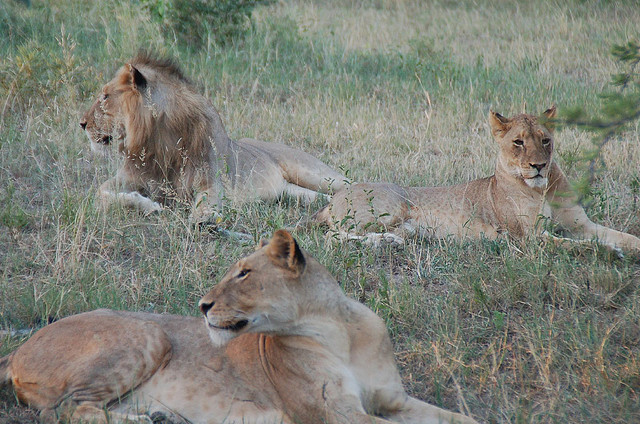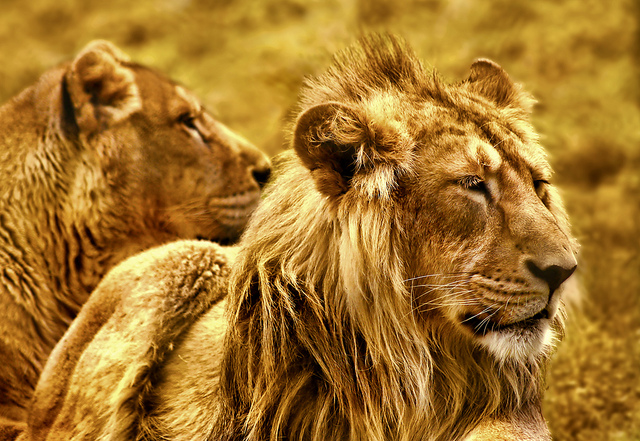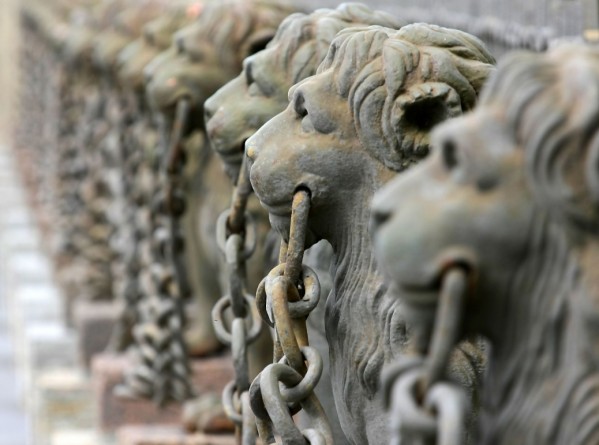Guarding our temples, adorning our flags, decorating our coins and capturing our hearts, the lion is definitely one of the world’s most iconic species. But despite the lions’ symbolic importance throughout the ages, today they are suffering from a silent extinction across Africa and India (read: there are fewer lions than rhinos in Africa.)
World Lion Day, being held on 10 August 2013, is the first global campaign to celebrate the importance of the lion worldwide. Since the dawn of man, the lion has played an important role in our lives: symbolically, religiously, culturally, economically and biologically. To lose the lion from our world would be to lose part of our global heritage.
World Lion Day is an independent campaign with the aim of raising awareness of the need for urgent action to save the lion from extinction. The campaign makes no attempt to highlight or preclude particular approaches to lion conservation, but rather seeks to attract attention and support to the many individuals and organizations that are working towards a shared vision: to ensure the future of the species.
The African Lion
Nothing quite epitomizes the wildness of the ‘dark continent’ better than the African lion. For hundreds of years the lion has captivated visitors to this ancient land. Over millennia lions have been at the centre of African mythology and folklore across the continent, and today, continue to influence Africa on a monumental scale. A ruling member of the ‘Big 5’, the lion is often the most sought after animal by tourists. Tens of millions of visitors are drawn to Africa every year by the allure of discovering the magnificent beast with the large black mane, bellowing his roar across the grassy plains.
Once ranging far and wide across the continent, the lion has since been lost from over 80% of its possible range, in just 50 years. In 1975 there were an estimated 250,000 lions in Africa, yet today the continental population stands at a mere 25 – 30,000 individuals. This staggering 80-90% decline means that the fragmented, isolated remaining sub-populations have questionable long-term viability.

Image by Covair Owner
Recent studies have shown that lions exist in 67 areas across the continent; but only 9 countries have at least 1000 individuals, and 5 countries are thought to have lost their populations entirely since 2002. Since the recognition of 86 Lion Conservation Units in 2006, following the IUCN Regional Lion Conservation Workshops, 18 have been declared extinct in countries such as Mali, Democratic Republic of Congo, Nigeria and Malawi.
In West and Central Africa populations are deemed ‘Regionally Critically Endangered’: the remaining c. 2800 individuals continue to decline at an alarming rate.
In Kenya, a country that is closely associated with the regal lion and still considered a top wildlife destination, lions are perishing by c. 100 individuals each year due to severe human-wildlife conflict. Lion conservationists fear that lions could go extinct in the country within a matter of years.
The Asiatic Lion
The deep jungles of India are famed for their strange and wonderful beasts; the Bengal tiger, the pygmy elephant and the Indian rhino, but hidden in the small Gir Forest National Reserve of Gujarat State lives the little known Asiatic lion.
The Asiatic lion has quite distinct physical characteristics such as prominent tufts of hair on their elbows and at the end of their tails. What is most notable is their size in comparison to the African lion. Asiatic lions are significantly smaller than African lions and the males often have smaller, sparser manes. Such features were once thought to have derived from thousands of years of evolution, however, recent studies have suggested intense inbreeding over recent generations has resulted in such characteristics.

Photo from LHG Creative Photography
Once found roaming across India and the Middle East, the Asiatic lion population was decimated to just 13 individuals around 1907 due to trophy hunters. By 1975, after the banning of hunting, the species was awarded protection, and the population rose to a meagre 185 lions. In the last three decades, the population has risen from the brink of extinction into a conservation success story to around 411 individuals today. The expansion of the population’s range into the neighbouring Girnar Forest has also increased the lion’s habitat from 1,883km2 to c. 10,000km2.
Despite the slow (but promising) population increase, an estimated 50 lions die annually due to a variety of threats. Due to the incredibly small and isolated nature of the entire population, a natural environmental disaster such as the outbreak of a single epidemic disease, a severe drought or major bush fire could see the extinction of the sub-species.
World Lion Day
Leading up to the day itself, the World Lion Day campaign is generating support for individuals and organizations in both Africa and India that are working tirelessly for the conservation of lions. On the 10th August 2013, it is hoped that events marking the day will be held across the globe that will help to raise awareness and funds for this vital work to continue. And in the year leading up to the next World Lion Day, it is hoped that the world’s citizens will continue to support lion conservation efforts.
Visit www.worldlionday.com or the World Lion Day Facebook page to find out more.

















